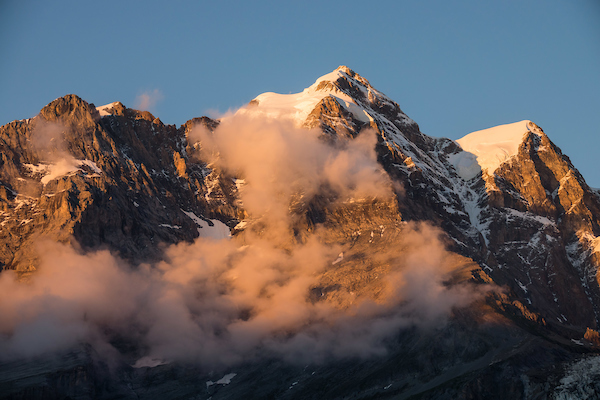Setting forth on a Swiss adventure anytime soon? Don’t forget your camera! After all, Switzerland is an extremely scenic country, and you’ll want to do it justice. But if you’re a beginner photographer who needs a few pointers, don’t worry — we’ve got you covered! These photography tips will help you get the right shots.
Photography tips for beginners

Composition
First things first — the rule of thirds is an important guideline that will help you compose your image well. You’ll need to pretend that your subject has two vertical and two horizontal grid lines running through it; basically, use your imagination to superimpose a tic-tac-toe board on the image. Then line up your subject on the intersection of two grid lines.
It takes a while to overcome the instinct to center your subject perfectly, but your photos will be more visually interesting if you follow the rule of thirds.
While you’re thinking about the rule of thirds, remember that balance is also an important element of composition. Clustering all the visual weight on one side of the photo would be a mistake, so you’ll want to spread it out. Try to counteract your main subject’s visual weight by placing secondary subjects on the opposite side.
At the same time, don’t let your photos become too cluttered! If they’re overly busy, they’ll look like pages torn out of a Where’s Waldo? book.
Have you already realized that this is a delicate balance? Like any craft, photography requires a lot of trial and error. Keep at it, and you’ll see your photos improve over time.

Depth
Depth is the first cousin of composition. And since manipulating the depth will make your image feel immersive and three-dimensional, it’s an important aspect of any photo. Try out these tips to get the depth just right.
When you raise your camera to your subject, try to separate the foreground from the background. There are several ways to do this. For example, you could photograph a nearby object with a distant background. Alternatively, you could change your settings and use a small aperture (which shrinks your camera’s eye and tightens the focus).
In certain circumstances, you can even photograph your subject through a pre-existing frame, like a door, an arch, or an open window. This technique is called framing within a frame. It isn’t always possible, and it should be used sparingly, but it definitely adds visual interest.

Lighting
Next, let’s talk about lighting.
Keep in mind that you should shoot with your light source behind you. This will ensure that the subject is illuminated, rather than backlit.
You’ll achieve the best results if you take your photos around sunrise or sunset. Photographers refer to these periods as blue hour (when the sun is below the horizon) and golden hour (when the sun is just below the horizon or low in the sky). There are two blue hours and two golden hours every day, and shooting during these times will cast a soft, magical light on your subjects.
Of course, certain shots call for breaking the rules. As you gain experience, you’ll find subjects that lend themselves well to backlighting or busy backgrounds. But when you’re starting out, you’ll achieve the best results by sticking to the basics we outlined above.
Unique photo opportunities in Switzerland
Ready to take awe-inspiring photos of the most beautiful mountains in Europe? Our Alps Photo Workshop offers up subjects like villages, vineyards, waterfalls, and wildflowers, and the tour is led by a professional photographer! (See what he has to say about the workshop here.)
If you’re still not convinced that the Alps Photo Workshop is for you, follow us on Instagram — we have a hunch that our posts will change your mind.
All photos by Tom Dempsey
- It’s almost Swiss National Day! - July 26, 2018
- Celebrating Christmas in Switzerland - June 25, 2018
- The Tour du Mont Blanc: one of the world’s greatest adventures - June 7, 2018


